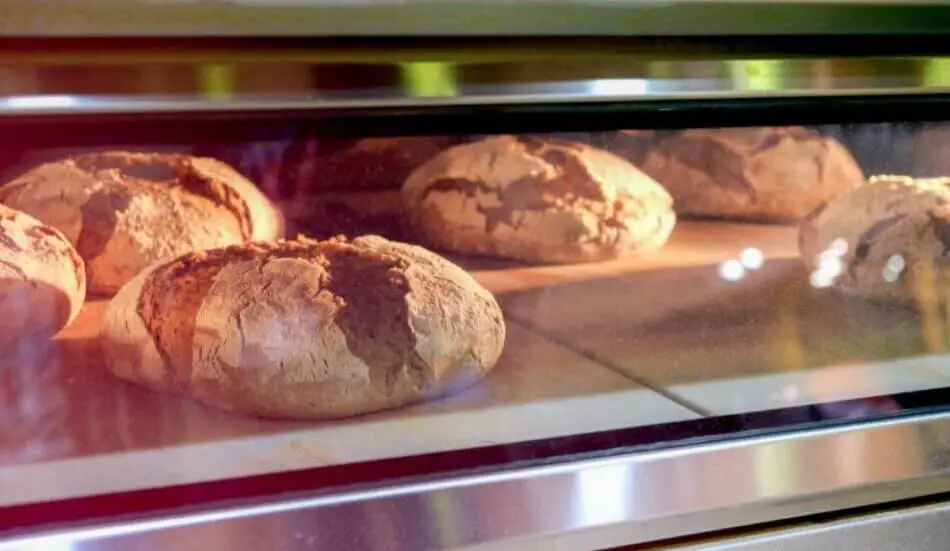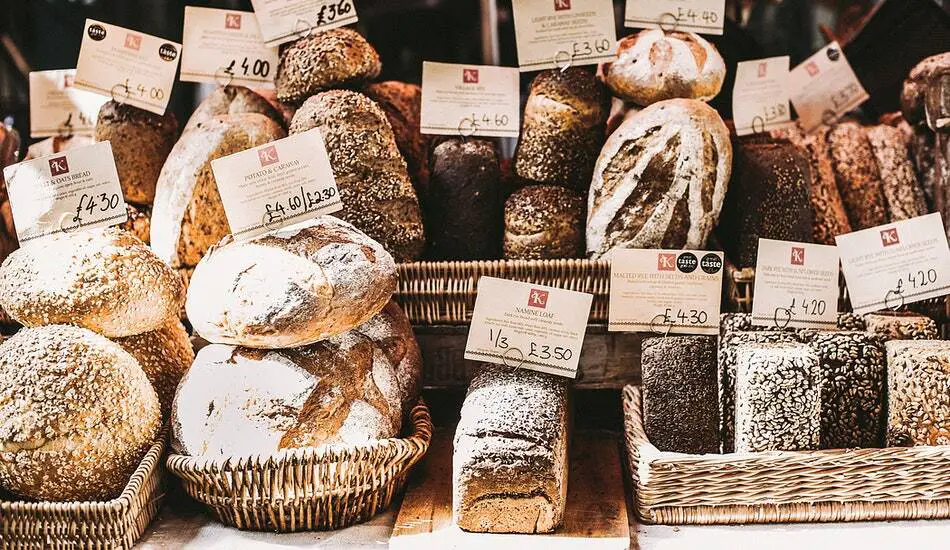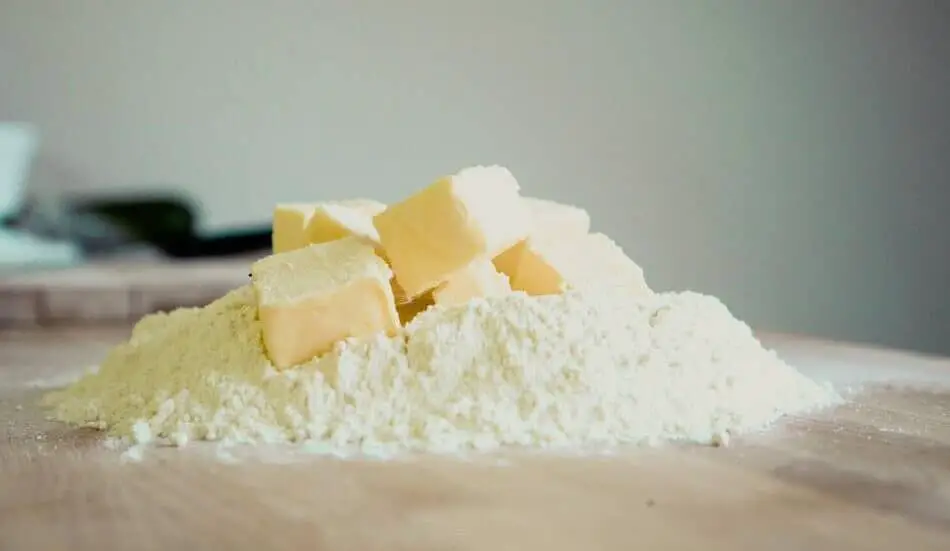Fats and oil inhibits gluten development in sourdough, increases fermentation time, reduce baking time, reduces oven spring, reduces the size of holes in the crumb, softens the crumb and crust, imparts a rich taste to the bread and increases the bread’s shelf life by delaying the staling process.
Remember to reduce the weight of water in the dough by the same weight of oil to maintain the same dough hydration level. Since oil is a liquid at room temperature, it is considered as hydration similar to water in the dough.
Mixing, Folding and Gluten Development
Fats and oil is a shortening agent; the lipids coats the protein strands in flour which inhibits gluten development. The proteins glutenin and gliadin requires water to combine and form gluten strands which gives the dough its strength, stretchability and ability to trap fermentation gasses to rise.
As more fats and oil is introduced into the dough, more of the gluten forming proteins are coated with the lipids. As oil and water repel one another, water becomes increasingly unavailable to the gluten forming proteins to develop gluten.
When adding fats and oil to the dough, we have to increase mixing time and the number of stretch and folds to develop the dough to the same gluten level as a dough without oil.
Compared to a dough with no fats and oil, a dough with 10% baker percentage of oil will require 1 minute of extra mixing time and 1 extra stretch and fold to achieve the same gluten development, a 20% oil dough will requires 1.5 minute of extra mixing time and 1 extra stretch and fold to achieve the same gluten development.
| % (baker’s percentage) Oil in Dough | Mixing Time | Stretch and Folds |
| 0% | 2 minutes | 3 |
| 10% | 3 minutes | 4 |
| 20% | 3.5 minutes | 4 |
Fermentation time
Fermentation is notably slower as the percentage of oil in the dough increases. This could be due to the reduction of water content in the dough as the quantity of oil in the dough increases; to maintain the same hydration level of a dough, we replace the same weight of water in the dough with the same weight of oil.
Fermentation requires sufficient water for an optimum reaction, when a dough is too dry, fermentation rate reduces. Although a dough with a high percentage of oil may feel well hydrated, it will not ferment well, as fermentation requires water and not oil.
When adding fats and oil to the dough, we have to increase bulk fermentation and final proofing time to sufficiently proof the dough before it is baked.
For every 10% baker’s percentage increase in oil in the dough, increase fermentation and final proofing time by 30 minutes.

Baking duration
The addition of oil and fats in the dough increases the dough’s ability to absorb heat from the oven as oil and fats have a very high specific heat capacity. This means that baking time needs to be reduced in proportion to the increase of oil and fat content in the dough.
However, bake time varies greatly depending on the temperature parameters of the day; temperature of the oven, temperature of the dough and the temperature of the room. Hence the best indicator to when the bread has finished baking is to look at the coloration of the crust.
When baking with oil, the crust will darken much faster than when baking without oil. If the bread takes on too much coloration too quickly, lower the oven temperature by 5 Celcius for the rest of the bake.
The table below gives us a rough guide as to how much bake times reduces for every 10% increase in fats and oil content in the dough.
| % (baker’s percentage) Oil in Dough | Bake Temperature | Bake Time |
| 0% | 235 Celcius | 45 minutes |
| 10% | 235 Celcius | 42 minutes |
| 20% | 235 Celcius | 40 minutes |
Oven Spring
The oven spring when baking with oil is not as great as the oven spring you get when baking without oil. The dough with oil has less gluten even with the extra mixing, stretching and folding, hence it does not trap the fermentation gasses as well as a dough without any oil.
The fermentation gasses dissipates out of the dough, leading to a reduced oven spring, but not to a point where the baked loaf is flat. The baked oiled loaf still has a very respectable volume, just not as good as a baked loaf without any oil; you will get about 1 cm less in height of the baked oil loaf.
Crumb and Crust
The crumb structure of the oiled loaf will take on a more closed structure with smaller holes that are evenly dispersed. This can be explained by the effect that oil has on the reduction of gluten in the dough. Fermentation gasses dissipates out of the oiled dough, causing the size of holes in the crumb to be smaller than that of a baked loaf without oil.
The oiled loaf is also considerably softer and has a pillowy texture when compared to the loaf without any oil; the oil and fats coats the gluten strands which softens the crust and crumb of the bread. This is why you will not find oil in breads like the baguette which are known for its crispy crust; the oil softens the crust making it chewy instead of crispy.
Flavor
Oils and fat imparts a richness to the baked bread. Some oils like olive oil adds a slight peppery note to the bread. If you want a neutral tasting bread, use neutral tasting oil like peanut, canola, safflower oil if you do not like the added peppery taste.

Shelf life
When oil is added into the bread, it enhances keeping quality and shelf life of bread by slowing down the staling process.
The process of staling is called starch retrogradation. Starch molecules in the bread swells with water to transform into a gel-like structure through a process known as starch gelatinization when it is heated in the oven. As the bread cools after it is removed from the oven, the water molecules in the starches dissipates out and the starches reverts from a soft gelatinized state into a hard crystalline state. When too many starch molecules have been reverted into its hard crystalline state, the bread hardens and stales.
Since oil coats the starch molecules, it makes it harder for the water to dissipate out of the starches when it cools, prolonging the time it takes for the starch to revert back into its hard crystalline state, thus delaying staling.
Adding oil to the sourdough bread can prolong its shelf life by a few days.


